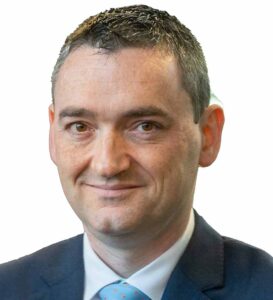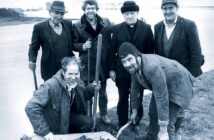
- The 2025 British Open at Royal Portrush is likely to boost golf tourism in Ireland, building on the £100 million economic impact from 2019, with projections suggesting even greater benefits.
- Hosting costs are significant, though exact figures for the host club are unclear; research suggests The R&A covers much, but local investment is also needed.
- Increased tourism value could double the 2019 impact, driven by global exposure and Ireland’s 400 golf courses, including 100 links courses (a quarter of the world’s total).
- Past events like the 1960 Canada Cup at Portmarnock, Irish Open, European Open at the K Club (1995–2007), Ryder Cup 2006 at the K Club, and 2019 British Open at Portrush show similar economic boosts.
This week’ss British Open at Royal Portrush is expected to significantly enhance golf tourism across Ireland but by how much? The answer is not as straightforward as then tourism interests stumping up €100m to host the event would like, but an informed calculation would estimate generate to 50,000 incremental visitors to explore both links and parkland courses. But it number is insignificant in comparison with the spend.
The 2019 event at the same venue generated an estimated £100 million in economic benefits for Northern Ireland, and projections suggest this could double in 2025, benefiting the entire island through increased visitor spending and global exposure. Ireland’s reputation as a golf destination, with its 400 courses including 100 links courses (a quarter of the world’s total), is set to soar like a Rory drive.
The impact of the 2025 Open at Royal Portrush, the third time the championship has ventured beyond England and Scotland to the Antrim coast (Wales hosted the Ryder Cup in 2010, but has never hosted the British Open), is expected to surpass the remarkable success of the 2019 event, which drew a record-breaking 237,750 spectators and injected £100 million into the economy.

Janice Gault, chief executive of the NI Hotels Federation, projects that this year’s championship, running from 17 to 20 July, could generate over £213 million, with an anticipated 278,000 fans flocking to the Causeway Coast. This economic windfall is not confined to Portrush; it ripples across the island, boosting hospitality, retail, and tourism sectors.
John McGrillen, chief executive of Tourism NI, emphasises that the global exposure from over 5,400 hours of television coverage, broadcast to 500 million homes, presents Ireland not only as a golfing haven but as a vibrant destination for investment and leisure.
The 2019 Open, won by Offaly’s Shane Lowry in a triumphant display on the Dunluce Links, marked a turning point for Northern Ireland’s image, shaking off the shadows of its troubled past. The event’s success, described as “merry, Irish mayhem” by the late commentator Peter Alliss, sparked a renaissance in Portrush, with new hotels, restaurants, and a five-star property, Dunluce Lodge, emerging to cater to the influx of visitors.
Politician Wilma Erskine, a key figure in bringing the Open to Portrush, notes that such developments were unthinkable two decades ago, when tourism reports deemed the north coast incapable of supporting luxury accommodations. The 2025 Open is poised to further this transformation, with increased hotel capacity in Belfast, Derry, and Portrush, though most rooms were snapped up months in advance.
Proud history of hosting

Ireland’s golf tourism boom is deeply rooted in the island’s history of hosting prestigious tournaments. The Canada Cup at Portmarnock in 1958, a precursor to the World Cup of Golf, showcased the Dublin links course’s challenging layout and drew international attention. Portmarnock, often mooted as a potential future Open venue, has also hosted the Irish Open 19 times, alongside the Walker Cup in 1991 and the Amateur Championship in 1949 and 2019.
Similarly, the Irish Open, staged at venues like Royal Portrush in 2012, Royal County Down, and Ballybunion, has long highlighted Ireland’s golfing pedigree. The European Open and the 2006 Ryder Cup at The K Club in County Kildare further elevated the island’s profile, with the Ryder Cup showcasing the lush parkland course’s ability to host global spectacles. These events have collectively paved the way for the modern golf tourism surge, with the 2019 Open acting as a catalyst for unprecedented demand.
Ireland’s golfing landscape is a unique blend of links and parkland courses, each offering distinct challenges. Links courses, such as Royal Portrush’s Dunluce Links, Royal County Down, Ballybunion, Waterville, and Lahinch, are defined by their coastal settings, sandy soils, and exposure to the elements, with wind, gorse, and deep bunkers shaping play. Royal County Down, ranked the world’s top course outside the U.S. by Golf Digest, and Ballybunion, with its dramatic dunes, exemplify the rugged beauty of links golf.
Parkland courses, like The K Club or Druids Glen, offer manicured fairways, tree-lined vistas, and strategic water hazards, providing a contrast to the raw, natural challenge of links. With 400 golf courses, including 100 coastal courses (40 true links courses) representing a quarter of the global total—Ireland’s diversity is unmatched. Prominent courses like Portmarnock, with its storied history, and Carne, known for its wild dunes, continue to draw golfers seeking both prestige and authenticity.
The cost
The cost of staging an event like the Open is substantial, running into an estimated €100m, involving course modifications, grandstand construction, and infrastructure upgrades. For 2019, Royal Portrush underwent significant changes, including the addition of two new holes on the Dunluce Links, overseen by architects Mackenzie & Ebert. The 2025 preparations, while less extensive, include tweaks to greens and tees to maintain the course’s formidable challenge.
These investments, alongside logistical demands like park-and-ride facilities and a cashless site, are justified by the economic returns. Golf tourists, particularly affluent American visitors, spend three to four times more than regular tourists, driving up green fees at top courses. Green fees can be expensive: Adare Manor costs €500, County Down £425 (€490), Old Head of Kinsale €470, Portrush £385 (€445), Portmarnock €400, Ballybunion €395, Lahinch and Waterville €370 each, The Island €320, and Royal Dublin €290.
The 2025 Open is not merely a sporting event but a cultural milestone, reinforcing Ireland’s status as a golfing mecca. The anticipation surrounding Portmarnock’s potential underscores the island’s growing influence. As Steve Martin, a golf industry leader, notes, the Open’s return has instilled a new social confidence in the north, while the broader island benefits from a tourism overhaul.
Despite challenges like rising costs and potential transport disruptions from a planned rail strike, the 2025 Open promises to be a landmark moment, celebrating Ireland’s 400 courses, its unparalleled links heritage, and a future where golf continues to drive economic and cultural vitality.
Expensive game

Of course, staging such events involves significant expenses, potentially in the millions, covering infrastructure, security, and operations. The R&A, which organises the event, appears to fund much of this, but local investment, such as course upgrades for Royal Portrush, is also required.
The costs, estimated at over €40 million for a tournament of this stature, are offset by revenue from ticket sales and sponsorships, but the financial burden on host clubs remains a complex topic. The sometimes crude economic multipliers put on these events to indicate their value in increased tourism are controversial, but there is an often unquantifiable boost to local economies through accommodation, dining, and activities.
The 2019 British Open at Portrush, the 148th, attracted 237,750 spectators, second only to the 2022 Open at St Andrews, and generating over £100 million in economic benefit for Northern Ireland, according to an independent study by Sheffield Hallam University’s Sport Industry Research Centre (SIRC) commissioned by The R&A. This economic impact included £45 million in new money entering the economy and £37.3 million in destination marketing benefit from over 5,400 hours of global television coverage.
For 2025, the evidence leans toward an even larger boost, with sold-out tickets and . the event’s global television coverage, expected to reach 199 countries and territories. Janice Gault, chief executive of the NI Hotels Federation, estimates a £213 million benefit, covering tourism, retail, and hospitality sectors.
Hosting this prestigious major, one of golf’s four grandest tournaments, is set to deliver a transformative economic and cultural boost across the 32 counties, building on the legacy of previous high-profile events and showcasing Ireland’s extraordinary golfing heritage, with its 400 golf courses, including 100 coastal courses (40 true links courses) that account for a quarter of the world’s total.
Counting the rewards
Ireland’s golfing landscape is uniquely positioned to capitalise on this event, with over 400 golf courses spread across the island, catering to a wide range of preferences. Of these, 40 are links courses, representing a quarter of the world’s total links courses, as per The Links Association’s count of 247 true links courses globally.
Links courses, characterised by their coastal settings, sandy soil, and natural undulations, are a hallmark of Irish golf, offering a challenging and authentic experience that attracts golfers worldwide. Prominent examples incude Royal County Down, ranked number one by Golf Digest, Royal Portrush, host of the 2019 and 2025 Opens, Ballybunion, Lahinch, Portmarnock, Carne, Waterville, and Rosapenna (St Patrick’s). These courses are renowned for their dramatic dunescapes and testing conditions, attracting golfers seeking an authentic links experience.
Parkland courses, set inland with manicured landscapes, complement the links offerings. The K Club, with its Arnold Palmer-designed Palmer North and South courses, hosted the Ryder Cup 2006 and 13 European Opens, making it a standout parkland venue. Other notable parkland courses include Adare Manor, Carton House, Druid’s Glen, and Mount Juliet, each hosting professional tournaments and offering a different golfing challenge, with lush fairways and strategic designs.
This dual offering of links and parkland courses, combined with Ireland’s scenic beauty and accessibility, positions the island as a top golf destination, capable of catering to diverse preferences and enhancing the tourism impact of events like the 2025 British Open.
Portmarnock in the hunt

Research suggests that hosting major golf tournaments involves expenses in the tens of millions, covering infrastructure upgrades, security, operations, and hospitality. For the 2019 Open, Royal Portrush underwent major alterations, including the addition of two new holes and course lengthening by nearly 200 yards, costing an estimated several million pounds, funded partly by local investment and The R&A. The R&A, as the organiser, covers much of the operational costs through ticket sales, sponsorships, and broadcast rights, with the 2024 prize fund set at $17 million, up $500,000 from the previous year.
The financial burden on host clubs, such as Royal Portrush, includes lost revenue from regular play during the event and post-tournament repairs, though these are offset by long-term tourism gains.
The 1960 Canada Cup at Portmarnock, initially planned for 1958 but held in 1960, showcased Ireland’s ability to host international competitions, with an estimated cost of £30,000 at the time, reflecting significant local effort.
The Irish Open, a regular fixture at venues like the K Club, Royal County Down, and Portstewart, has consistently boosted tourism, with the 2017 event at Portstewart drawing significant crowds. The European Open at the K Club, held 13 times from 1995 to 2007, and the Ryder Cup 2006, where Darren Clarke’s emotional performance captivated global audiences and Europe won by 18½ to 9½ points.
The British Open, often referred to as The Open Championship, is the oldest golf tournament in the world, founded in 1860, and is one of the four men’s major championships. Its return to Royal Portrush follows successful stagings in 1951 and 2019. The R&A’s funding model, which reinvests proceeds into golf development globally, mitigates some financial strain, but local investment remains essential. There are moves to stage a future British Open at Portmarnock, with €40m on the table from the Irish government.
The 2019 British Open at Royal Portrush, with Shane Lowry’s victory, was a cultural and economic triumph, reinforcing Ireland’s golfing heritage. These events collectively demonstrate a pattern of increased tourism, with each championship leaving a lasting legacy, from economic injections to enhanced global visibility, setting the stage for the 2025 Open’s anticipated impact.
- Ireland’s links courses: Achill Island, Ardglass, Arklow, Ballybunion (2 courses, Cashen & Old) , Ballylifflin (3 courses, Glashedy, Old & Pollan Links), Baltray , Bundoran, Bushfoot, Carne (2 courses, Hackett & Kilmore), Castlegregory Golf & Fishing Club, Castlerock (2 courses Bann & Mussenden) , Connemara (2 courses), Corballis, Cruit Island, Dingle, Donegal (Murvagh), Dooks, Doonbeg, Dunfanaghy, Enniscrone (Scurmore & The Dunes) , European Club Brittas Bay, Gweedore Golf Club, Island, Kirkistown, Lahinch (2 courses, Castle & old), Laytown & Bettystown, Mulranny, Narin & Portnoo, North West, Portmarnock (3 courses, Championship, Yellow and Hotel), Portsalon, Portstewart (3 courses, Old, Riverside & Strand) , Rosapenna (3 courses, Old Tom Morris, Sandy Hills & St Patrick’s), Rosses Point (County Sligo, 2 courses, Bomore & Championship), Rosslare (2 courses Burrow and Old), Royal County Down (2 courses, Annesley & Championship) , Royal Dublin, Royal Portrush (2 courses, Dunluce & Valley), Rush, Seapoint, Spanish Point, St Anne’s Dublin, Strandhill, Sutton, Tralee, Waterville.



